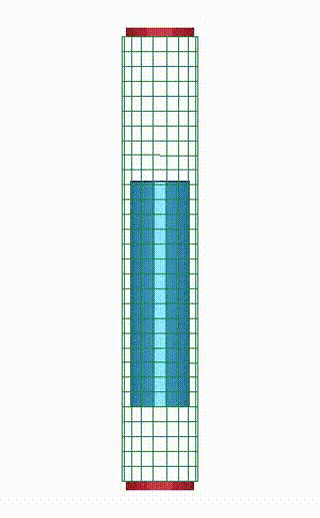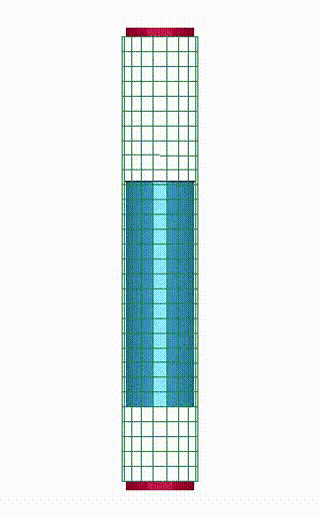Simulation and Failure Prediction of Abdominal Aortic Aneurysm
(In collaboration with Jonathan Vande Geest)

LEAK

NO LEAK
The local dilation of the infrarenal aorta, termed an abdominal aortic aneurysm (AAA), affects 2-4% of the adult population in the United States and may eventually lead to rupture, an event currently ranked the 15 leading cause of death. For those patients whose AAAs grow to a critical diameter, it becomes necessary to treat the aneurysm either by open surgery and prosthetic replacement or by endovascular repair (EVAR). EVAR was introduced in the early 1990’s and represents a significant improvement over open surgery. This procedure involves inserting an endovascular graft into the aneurysm to prevent pressurization of the AAA cavity. As compared to open surgery, EVAR results in lower blood loss and a shorter hospital stay for the patient. Despite the promising use of EVAR in AAA, this procedure is prone to several failure mechanisms including but not limited to graft migration and endoleak.
Endoleak is defined as the flow of blood into the AAA sac after EVAR. There are several types of endoleak, each defined by the mechanism through which blood enters the AAA sac. Type I endoleak occurs when there is an ineffective seal between the endovascular graft and the AAA neck. While type I endoleak is a rare complication after EVAR, it is associated with a high number of reinterventions and potentially serious consequences.
The purpose of this study is to evaluate the influences of several clinically relevant variables on the occurrence of failure (e.g., type I endoleak). In addition, the geometric and material properties of the graft will be modified in order to minimize the likelihood of leakage and migration. In order to accomplish this, a finite element model of a grafted AAA will be analyzed using LS-DYNA, a transient dynamic finite element code. Direct coupling between blood flow and the grafted artery is simulated in LS-DYNA with a multi-material formulation. This coupling will allow for accurate predictions of how blood flow will affect the performance of endografts in a variety of AAA configurations.
References:
, “Towards the Prediction and Minimization of Device Failure for Endolvascular Grafts in Abdominal Aortic Aneurysms”, Proceedings of the ASME Summer Bioengineering Conference, Keystone, CO: American Society of Mechanical Engineers, 2007, pp. 395–396.
Theme by Danetsoft and Danang Probo Sayekti inspired by Maksimer

